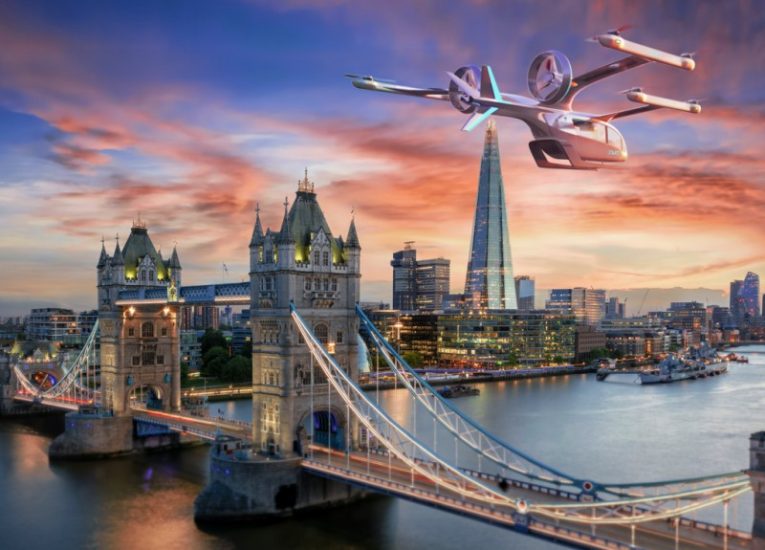The UK Air Mobility Consortium which has been working together as part of the Civil Aviation Authority’s Future Air Mobility Regulatory Sandbox, has now published a full Concept of Operations for UAM in London setting out the likely phases of UAM operations, how existing ATM technologies can be leveraged to support initial operations, and what regulatory challenges need to be overcome. The CONOPS and London use case will enable greater understanding of UAM and drive the development of regulations that will shape the future of eVTOL flights across London and the rest of the UK.
Led by Eve UAM, an Embraer company, the UK Air Mobility Consortium consists of global companies with expertise that span the aviation industry, including NATS, Heathrow Airport, London City Airport, Skyports, Atech, Volocopter, and Vertical Aerospace.
The CAA’s Regulatory Sandbox offers organizations or consortia the opportunity to test and trial the viability of their innovative solutions, while also helping the regulator shape future regulations in line with their novel technologies and concepts. In January 2021, the consortium was selected by the CAA to join the sandbox on its Future Air Mobility Challenge to develop a strategic framework that will define the low-level airspace designs, procedures, and infrastructure for safely integrating new types of UAM operations across the UK.
The first major milestone from the project was the compilation of a baseline describing key regulatory challenges which need to be addressed to enable safe, efficient, and scalable zero-emission UAM operations, resulting in the Civil Aviation Publication 2272. The consortium used this baseline to identify which areas to focus on in order to ensure the proposed concepts consider the criteria previously aligned with the regulator.
The CONOPS was developed as a London-centric case study, transporting passengers within a network of vertiports from Heathrow Airport to London City Airport. The consortium followed a rigorous process to develop the concepts, including interactive reviews from the CAA Innovation Hub and a comprehensive range of its subject matter experts, incorporating their feedback into the final document. It also leveraged quantitative data derived from computer modelling simulations to support its proposed concepts, as well as a series of stakeholder engagement activities to better understand stakeholder concerns and needs related to UAM operations.
Frederic Laugere, UK CAA Innovation Services Lead, said: “The infrastructure required to support the future implementation of Urban Air Mobility (UAM) will be significant and a key element for the success of this new sector. The significant detail in this report and its real-world scenario means it paves the way to make UAM a reality.”
“This CONOPS focuses primarily on the solutions necessary for near-term challenges that could impact initial commercial operations. The London use case and CONOPS provide a tangible example for the CAA to better understand the aims of UAM and support the development of future regulations accordingly. Our work also indicates how thriving the market for eVTOL flights in the UK will be in the future,” said Andre Stein, co-CEO of Eve.
The CONOPS can be downloaded here.
For more information visit:




